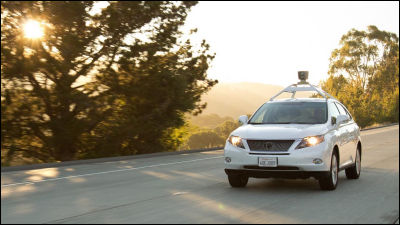National Transportation Safety Board Requires All New Vehicles to Have Alcohol Detection Systems

On New Year's Day 2021, a car crash killed nine people, including seven children, in California. It is known that the driver who caused the accident was drinking alcohol and speeding. The National Transportation Safety Board (NTSB) has clarified the idea that all new cars should be equipped with an alcohol detection system, saying that ``technology should be able to prevent such accidents.''
NTSB Calls for Alcohol Detection Systems in All New Vehicles

NTSB wants alcohol detection systems installed in all new cars in US | Ars Technica
https://arstechnica.com/tech-policy/2022/09/ntsb-wants-alcohol-detection-systems-installed-in-all-new-cars-in-us/
The NTSB wants all new vehicles to check drivers for alcohol use : NPR
https://www.npr.org/2022/09/20/1124171320/autos-drunk-driving-blood-alcohol-system-ntsb
The accident that triggered the problem occurred near Avenal, California around 8:00 pm on January 1, 2021. The driver who caused the accident was driving alone in an SUV down State Route 33 after drinking at a New Year's party. State Route 33 was a two-lane road with one lane in each direction, and the speed limit was 55 miles per hour (about 88 km), but this driver drove at 88 miles per hour (about 142 km) to 99 miles (about 160 km). was doing.
The driver of the SUV turned left as the car entered the unpaved shoulder on the right side of the lane, causing the SUV to go out of control, cross the center line and drive north into the oncoming lane. I had a head-on collision with a truck. In addition to the driver, seven children aged 6 to 15 were on board the truck, and it seems that they were running at a speed of 64 miles per hour (about 103 km) to 70 miles (about 113 km). The truck burst into flames immediately after the collision, and other drivers on State Route 33 rushed to rescue the occupants but did not have enough time to rescue the occupants, killing the SUV driver and all eight truck occupants.
The SUV driver's blood alcohol level was more than double the California legal limit of 0.08 grams per deciliter. In addition, tests conducted at the request of the NTSB found evidence of cannabis use, but it was not possible to determine whether cannabis use affected driving.
The NTSB said the cause of the accident at Avenal was that the SUV driver was in a state of severe alcohol poisoning and was unable to control the vehicle, and that the severity of the crash was due to the SUV driver speeding too much. In conclusion, the Ministry of Transport Highway Traffic Safety Administration (NHTSA) recommended that ``all new vehicles should be equipped with a vehicle-integrated alcohol detection system and an advanced driver monitoring system.'' In addition, to encourage the auto industry to address this important safety issue, we will inform members of the American Society for Automotive Innovation, which manufactures 98% of new cars sold in the United States, about the Avenal accident and encourage the development of advanced drunk driving prevention technology. It encouraged accelerated and prioritized deployment, and exploring innovative ways to adapt existing technologies, such as driver monitoring systems, to combat drunk driving.
It also reiterated its recommendation to NHTSA to provide incentives for automakers and consumers to adopt speed-adaptive systems to prevent speeding-related crashes.
Related Posts:
in Vehicle, Posted by logc_nt







